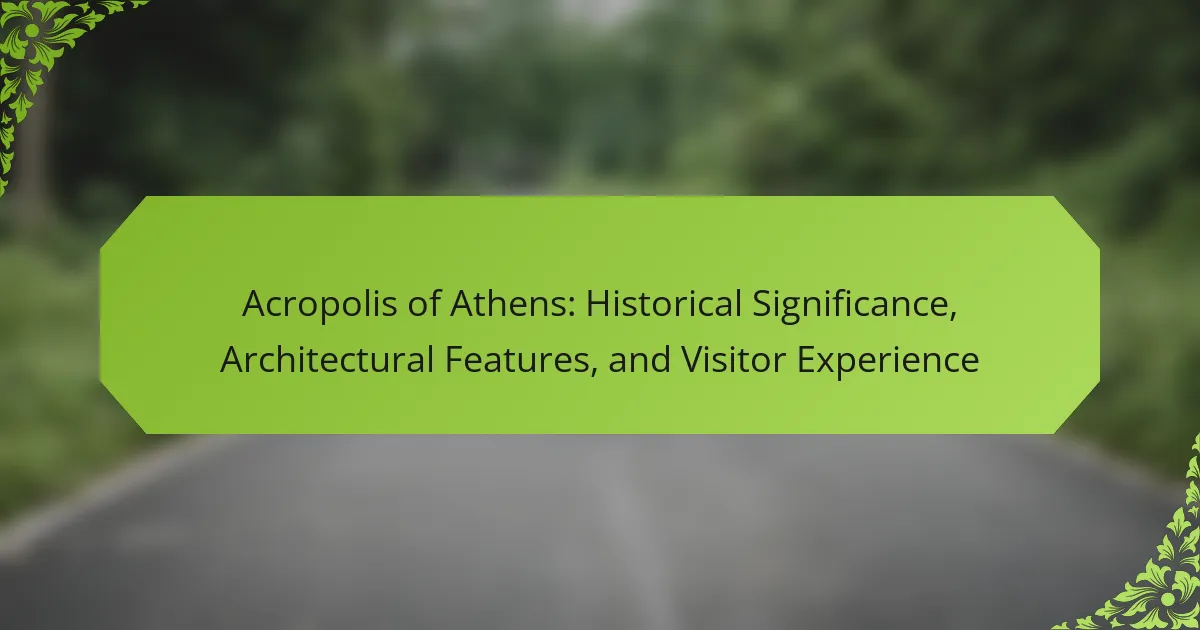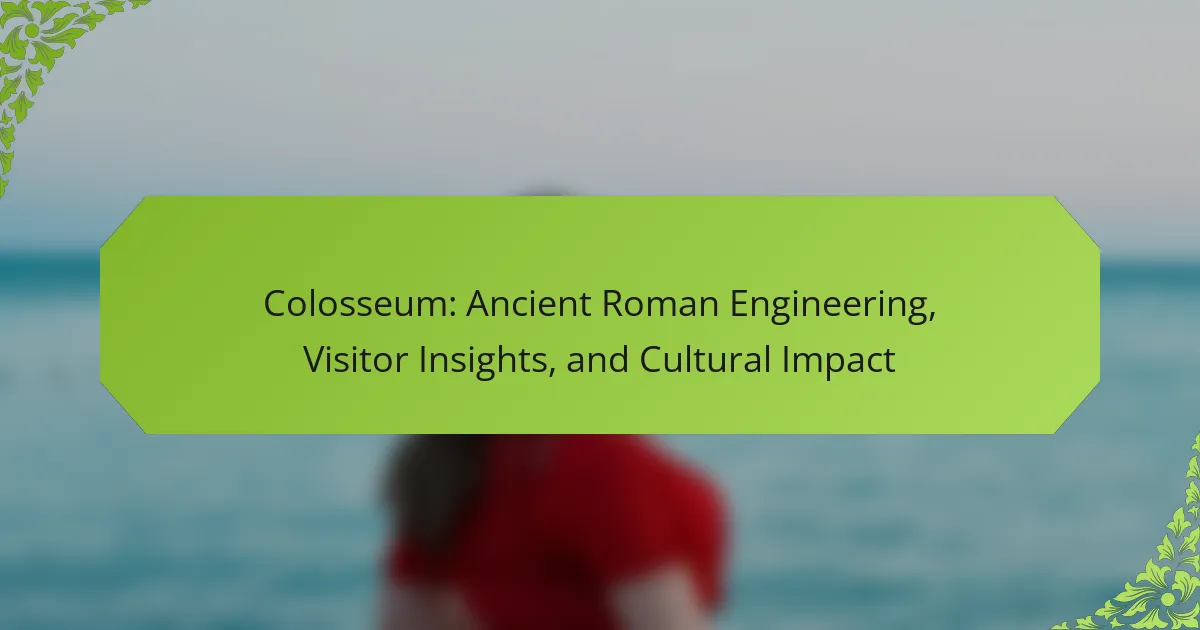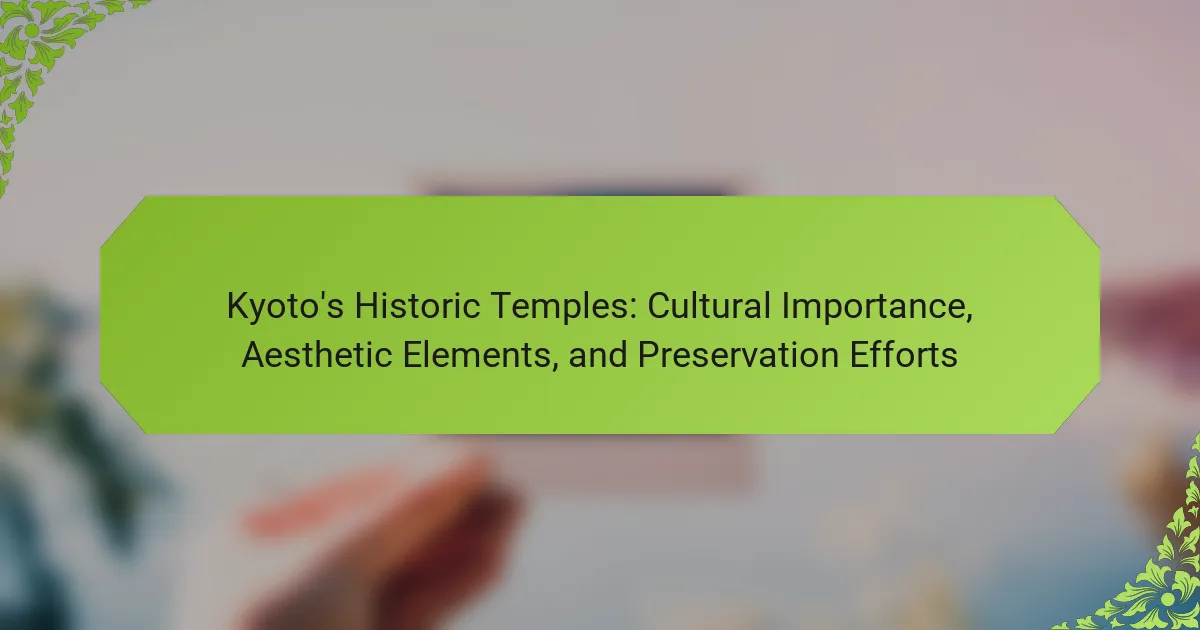The Acropolis of Athens offers a profound connection to ancient Greek civilization and democracy. This UNESCO World Heritage site features remarkable architectural elements like the Parthenon and Erechtheion. Visitors can explore its historical significance, architectural innovations, and the challenges it faces today. The experience is enriched by stunning views and guided tours that illuminate the site’s cultural impact.
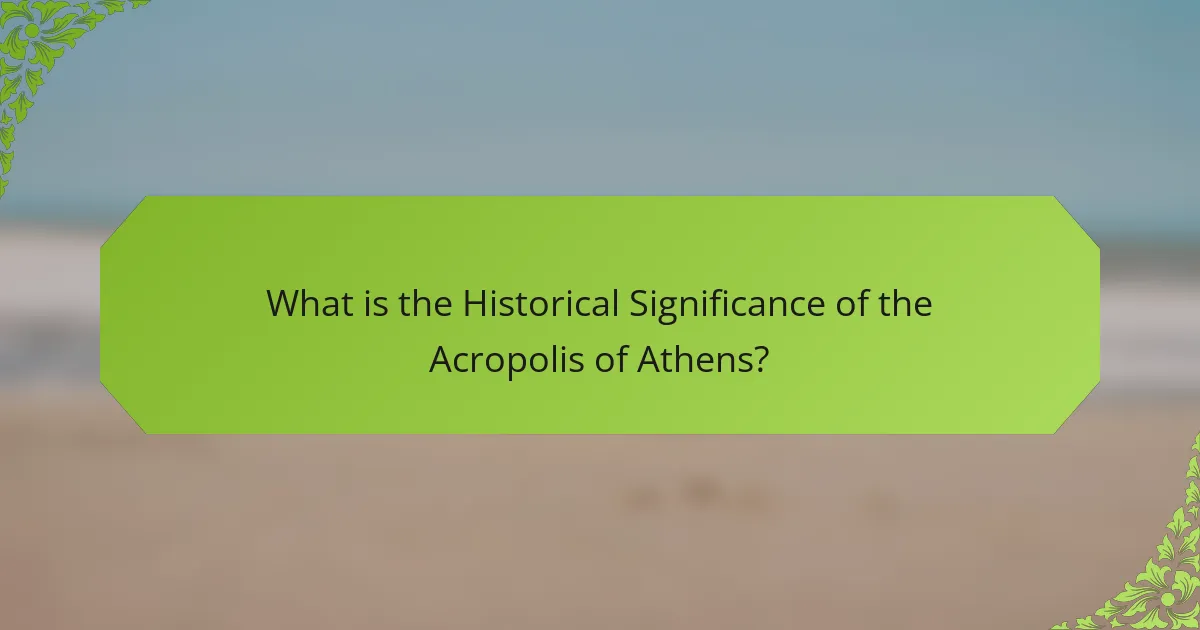
What is the Historical Significance of the Acropolis of Athens?
The Acropolis of Athens holds immense historical significance as a symbol of ancient Greek civilization and democracy. It served as a religious center dedicated to the goddess Athena and showcases remarkable architectural features, including the Parthenon. This structure exemplifies classical Greek architecture, highlighting the use of Doric columns and intricate sculptures. Visitors experience a profound connection to history while exploring the site, which has influenced art and culture worldwide. The Acropolis remains a testament to human achievement and the enduring legacy of ancient Greece.
How did the Acropolis influence Ancient Greek culture?
The Acropolis significantly shaped Ancient Greek culture through its architectural grandeur and religious importance. It served as a symbol of civic pride and artistic achievement. The Parthenon, a masterpiece of classical architecture, exemplified the ideals of beauty and harmony. The site also hosted religious festivals, fostering community identity and devotion to the goddess Athena. As a result, the Acropolis became a focal point for cultural expression, influencing art, philosophy, and politics in Ancient Greece.
What role did the Acropolis play in the development of democracy?
The Acropolis of Athens significantly influenced the development of democracy by serving as a political and cultural center. Its architectural features, such as the Parthenon, symbolized civic pride and unity. The site hosted important assemblies and discussions, fostering democratic ideals. Additionally, the Acropolis represented the values of citizenship and public involvement, essential to Athenian democracy.
Which historical events are closely associated with the Acropolis?
The Acropolis is closely associated with several historical events, including the construction of the Parthenon during the Golden Age of Athens and its role in the Persian Wars. The Acropolis served as a religious center dedicated to Athena and witnessed significant events like the Athenian democracy’s establishment. It also reflects the cultural achievements of ancient Greece and its influence on Western civilization. The site has endured through various occupations, including the Roman and Ottoman periods, marking its historical significance.
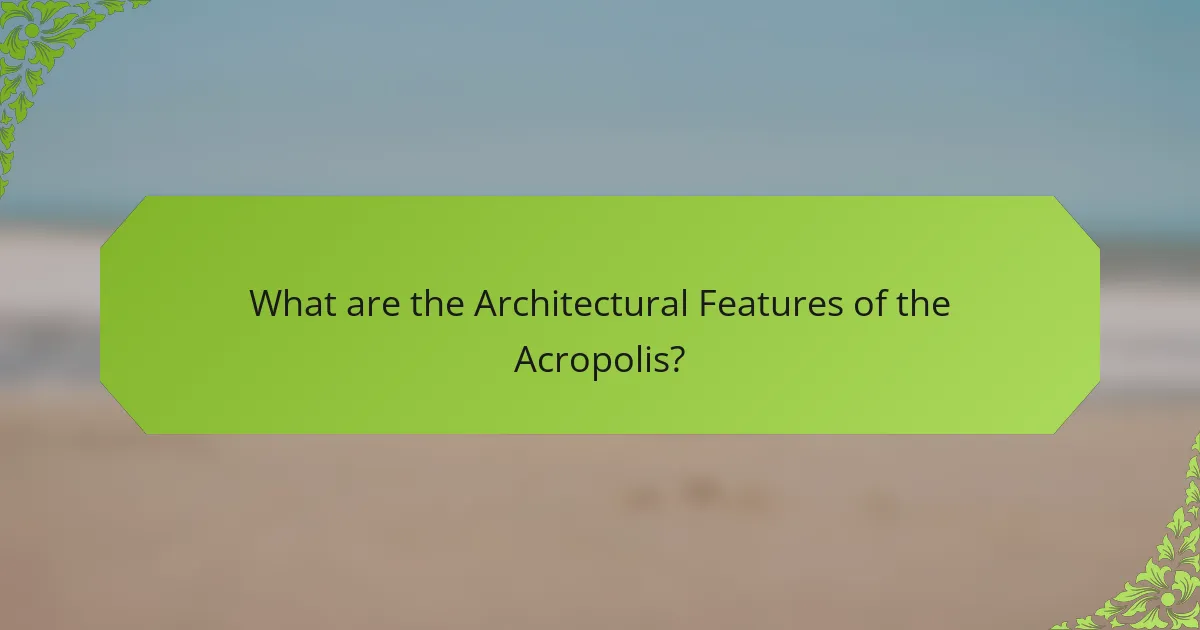
What are the Architectural Features of the Acropolis?
The Acropolis features classical Greek architecture, prominent structures, and intricate sculptures. Key architectural elements include the Parthenon, a symbol of democracy, characterized by its Doric columns and marble construction. The Erechtheion, notable for its asymmetrical design, houses the Caryatids, unique columns shaped like women. The Temple of Athena Nike showcases Ionic style with elegant friezes. Each structure reflects the artistic and cultural values of ancient Athens, emphasizing harmony, symmetry, and grandeur.
How do the Parthenon and Erechtheion exemplify classical architecture?
The Parthenon and Erechtheion exemplify classical architecture through their intricate design and cultural significance. The Parthenon showcases the Doric order, characterized by its sturdy columns and symmetry, symbolizing Athenian democracy and power. In contrast, the Erechtheion features the unique Caryatids, which replace traditional columns with elegantly draped female figures, reflecting the sacredness of the site. Both structures emphasize harmony, proportion, and the use of marble, representing the pinnacle of ancient Greek architectural innovation. Their enduring influence continues to inspire modern architecture worldwide.
What innovative construction techniques were used in the Acropolis?
Innovative construction techniques used in the Acropolis include the use of precise geometric planning, advanced stone-cutting methods, and the incorporation of optical illusions in design. The Parthenon, for instance, features entasis, a slight curvature in columns that enhances visual appeal. Additionally, the use of post-and-lintel construction allowed for large open spaces. The employment of cranes and scaffolding facilitated the assembly of massive stone blocks, showcasing engineering ingenuity. These techniques contributed to the Acropolis’s enduring architectural significance and aesthetic beauty.
How do the sculptures and friezes contribute to the Acropolis’s artistic value?
The sculptures and friezes significantly enhance the Acropolis’s artistic value by showcasing exceptional craftsmanship and cultural narratives. These artworks reflect the artistic innovation of ancient Greece, particularly in the Parthenon, where the frieze illustrates a grand procession. The intricate details and lifelike representations of figures demonstrate the unique attribute of realism that distinguishes these works. Additionally, the sculptures embody the philosophical and religious ideals of the time, reinforcing the Acropolis’s role as a symbol of Athenian democracy and civic pride. Overall, the artistic elements contribute to a deeper understanding of ancient Greek civilization and its values.

What Unique Attributes Distinguish the Acropolis from Other Ancient Sites?
The Acropolis stands out due to its unique combination of historical significance, architectural innovation, and cultural impact. Its role as a religious center dedicated to Athena distinguishes it from other ancient sites. The Parthenon, a masterpiece of classical architecture, showcases advanced construction techniques and aesthetic principles. Unlike many ruins, the Acropolis remains a symbol of democracy and Western civilization. Its continuous influence on art, philosophy, and politics further enhances its unique status among ancient locations.
What specific restoration efforts have been undertaken at the Acropolis?
Significant restoration efforts at the Acropolis include the ongoing work of the Acropolis Restoration Project, which began in 1975. This initiative aims to repair and preserve the Parthenon and other ancient structures, utilizing modern techniques to ensure structural integrity. Key activities involve removing pollutants, replacing damaged stones, and reinforcing columns. The project emphasizes the use of original materials and craftsmanship to maintain historical accuracy. As a result, the Acropolis remains a vital symbol of ancient Greek civilization and attracts millions of visitors annually.
How does the Acropolis reflect the religious practices of Ancient Athens?
The Acropolis of Athens exemplifies the religious practices of Ancient Athens through its temples and altars dedicated to various deities. The Parthenon, a temple to Athena, reflects the city’s devotion and the significance of goddess worship. Rituals and festivals, such as the Panathenaea, were celebrated here, emphasizing communal religious activities. The architectural features, including intricate sculptures and inscriptions, further illustrate the intertwining of art and spirituality in Athenian culture.

What Challenges Does the Acropolis Face Today?
The Acropolis faces several challenges today, including pollution, climate change, and tourism pressure. Pollution from nearby urban areas contributes to the degradation of its marble structures. Climate change poses risks through increased rainfall and temperature fluctuations, which can erode ancient materials. Moreover, the high volume of visitors strains infrastructure and threatens preservation efforts. Protecting this UNESCO World Heritage site requires balancing tourism with conservation.
How are environmental factors impacting the preservation of the Acropolis?
Environmental factors significantly threaten the preservation of the Acropolis. Pollution, climate change, and urbanization are the primary challenges.
Air pollution accelerates the erosion of marble structures, while acid rain contributes to chemical deterioration. Additionally, increased tourism leads to physical wear and tear on the site.
Effective preservation strategies must address these environmental impacts to protect the Acropolis for future generations.
What measures are being taken to manage visitor impact on the site?
To manage visitor impact on the Acropolis of Athens, several measures are being implemented. These include limiting daily visitor numbers, establishing designated pathways, and enhancing educational programs. These strategies aim to protect the site’s structural integrity and preserve its historical significance. Regular monitoring of visitor behavior and environmental conditions further supports sustainable tourism practices.

What is the Visitor Experience Like at the Acropolis?
The visitor experience at the Acropolis is immersive and enriching. Visitors encounter ancient ruins, stunning views, and a deep sense of history. The site features iconic structures like the Parthenon, showcasing classical architecture and intricate sculptures. Guided tours are available, enhancing understanding of the site’s significance. Visitors often spend several hours exploring the area, with peak times seeing larger crowds. Facilities such as information centers and cafes support a comfortable visit. Overall, the Acropolis offers a unique blend of cultural heritage and breathtaking scenery.
How can visitors best prepare for their trip to the Acropolis?
To prepare for a trip to the Acropolis, visitors should plan their visit ahead, dress appropriately, and stay hydrated. Arriving early helps avoid crowds and the midday heat. Comfortable walking shoes are essential due to uneven terrain. A guided tour enhances understanding of the historical significance and architectural features. Visitors should also check for any special events or closures before their trip.
What are the most popular guided tours available for the Acropolis?
The most popular guided tours for the Acropolis include options that cater to various interests and preferences. These tours often highlight the historical significance, architectural features, and visitor experience of this ancient site.
1. Acropolis Skip-the-Line Tour: This tour allows visitors to bypass long queues, ensuring more time to explore the Parthenon and other significant structures.
2. Acropolis Guided Walking Tour: A knowledgeable guide provides insights into the history and architecture of the Acropolis, enhancing the visitor experience.
3. Acropolis and Ancient Agora Combo Tour: This option includes visits to both the Acropolis and the nearby Ancient Agora, offering a broader understanding of ancient Athenian life.
4. Private Acropolis Tour: Tailored for personalized experiences, this tour allows visitors to explore at their own pace with a dedicated guide.
5. Evening Acropolis Tour: A unique experience, this tour takes place during sunset, providing stunning views and a magical atmosphere.
6. Acropolis Museum Tour: This tour includes a visit to the Acropolis Museum, where visitors can see artifacts and learn more about the site’s history.
These tours provide a comprehensive understanding of the Acropolis, combining unique attributes with engaging visitor experiences.
Which amenities and facilities are provided for visitors at the Acropolis?
The Acropolis provides various amenities and facilities for visitors, enhancing their experience. Key features include visitor centers, guided tours, rest areas, and informative signage. Accessibility options are available, including ramps and designated pathways. Additionally, shops and cafes offer refreshments and souvenirs, ensuring a comprehensive visit.
What are the best practices for visiting the Acropolis in 2025?
To visit the Acropolis in 2025 effectively, consider these best practices. Plan your visit early in the day to avoid crowds and the heat. Wear comfortable footwear, as the terrain is uneven. Stay hydrated and bring sunscreen, as shade is limited. Use guided tours for in-depth historical insights. Respect the site by following all regulations and avoiding restricted areas.
